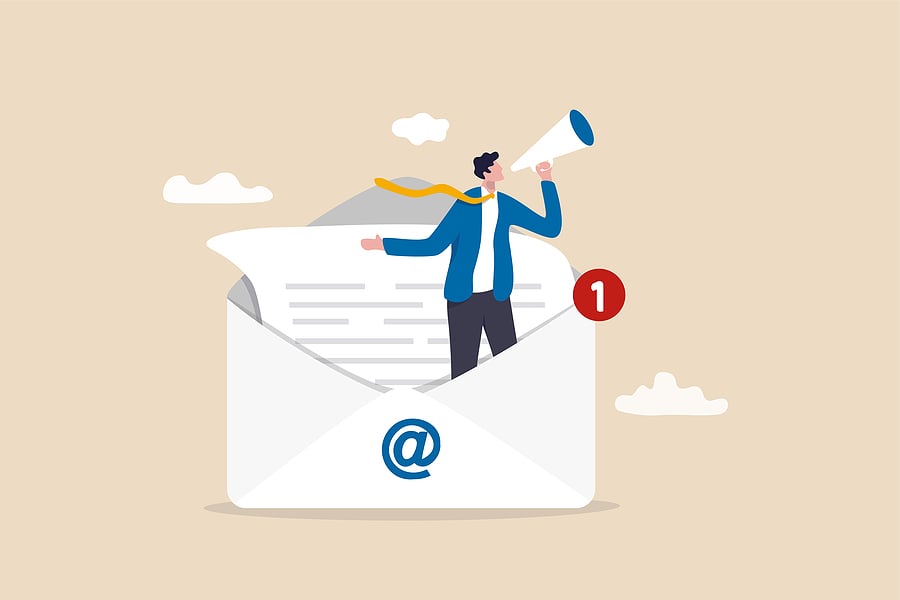5 Strategies to Help Customers Find You Online
Did you know that 67% of a customer’s journey happens online? More and more, consumers are doing online research before making any kind of decision...
![The Importance of A/B Split Testing [Plus 5 Quick Tips]](https://www.wildfigmarketing.com/hubfs/bigstock-AB-Testing-87731204.jpg)
Thinking about making changes to your website, but not sure if the changes you’re considering are a good idea? Or maybe you’re not getting the results you were hoping for from your email campaigns or social media posts?
Try doing an A/B split test!
If A/B tests aren’t a part of your marketing strategy, you’re missing out on an amazing tool to improve user experience, engagement, and conversions. Here’s an overview of A/B split testing, including what it is, why it’s important, and a few tips for a successful test.

A/B split testing is a way to compare two different versions of something—typically a web page, email, social post, or landing page—to see which one performs better with your audience. Users are shown one of two variants at random, and data is gathered to determine which variant performs better.
It allows you to directly compare the current experience (A) with a new version (B) and collect data showing the impact of that change.
A/B testing allows you to make careful changes to your user experience while collecting data on the impact it makes. It takes the guesswork out of optimizing your content, allowing you to make data-informed decisions that produce positive results.

A/B testing works by splitting your viewers, serving the current experience to half of them, and a modified version to the other half.

A/B testing gives you a wealth of information about your audience. It can help you:
These tests are easy to implement and can provide you with massive returns and help you ensure a better user experience for your audience.
Case in point:
We recently made some changes to our website homepage (which you may have noticed, if you’re a regular here 😉). We wanted to incorporate some of the StoryBrand tools we’ve been implementing for our clients, resulting in a homepage that better engages our visitors.
For about two months, we ran a split test where website visitors were randomly presented with either our original home page or the new StoryBrand version. And the results were eye-opening: The StoryBrand homepage saw a 65% increase in time spent on the page and three times more leads than our original homepage!
Needless to say, we made a permanent switch to the StoryBrand homepage.

Before you start making changes, first determine the goal you’re trying to reach. For example, are you looking to increase engagement, get more clicks on a promotion, or draw more visitors to sign up for your newsletter?
Choose something that’s measurable and points to your big, overarching goals for your business. Once you know the results you want to work toward, you’ll have a better idea of where to start testing, as well as what will define a successful test.
Start with one page of your website or a single email, social post, or landing page. Focus on small, incremental changes applied over time. There are dozens of small changes you can make, depending on your goal. For example, you could change a CTA, add a banner at the top of the page highlighting a lead magnet, change up the copy or subject line…you get the idea.
Testing vastly different versions won’t get you accurate results, and running dozens of tests at the same time can be overwhelming. Think about A/B testing as a long-term project that will, over time, help you improve your marketing.
While there’s no magic time frame for the perfect A/B test results, it’s important to let your test run long enough to get accurate data.
How long you let your test run depends a lot on how many people are viewing your content—the lower your views, the longer you’ll want to run your test. Ultimately, you want to run an A/B test until you see a statistically significant difference between the A and B versions.
Most A/B testing software has a built-in calculator to determine when statistically significant results have been reached. But if yours doesn’t, you can try this calculator from Neil Patel.
Most A/B testing tools offer a method of analyzing your results, showing you how your A and B versions performed. Look for the variant that had the best performance for the metric you were testing. For example, if you’re looking to increase engagement, look at which variant elicited more clicks on links.
You’re ultimately looking to see if your original goal was met by either of the variants. If it was, you know which variant to keep.
Lastly, keep track of all the A/B tests you do so you can refer back to the data in the future. Most A/B testing tools will save your test results for future reference.
Running multiple tests will give you the chance to try out different changes, some of which will resonate better with your audience than others. By periodically reviewing the data from your past tests, you can spot patterns that will help you refine future A/B tests.

Want help setting up A/B split tests or making changes to your website, email campaigns, or social media marketing? Schedule a free exploratory call to discuss your needs and see how the Wild Fig team can help!


Did you know that 67% of a customer’s journey happens online? More and more, consumers are doing online research before making any kind of decision...
![How Often Should I Refresh the Content on My Website? [And Why Is It Important?]](https://www.wildfigmarketing.com/hubfs/bigstock-Technical-Support-Programming-460826949.jpg)
If it's been a while since you made updates to your website...it might be time.

In 2022, the number of global email users was forecast at 4.3 billion. In 2025, that number is expected to grow to 4.6 billion—that’s more than half...